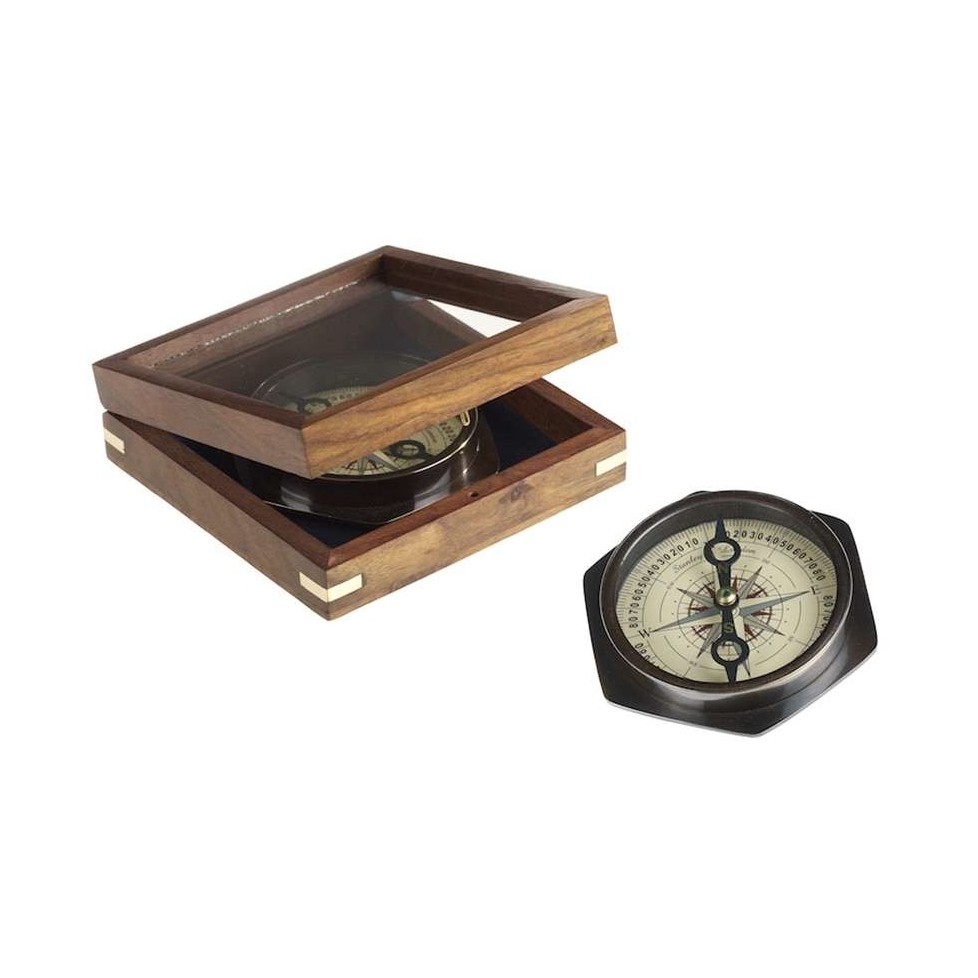

| Los pedidos realizados el día 25 de Julio, se procesarán el día 26 por fiesta local. |


Antiqued brass compass with a box of rosewood and glass.
The compass (from the Latin "passus" ("step")) opened up the world to exploration and discovery. The principle of the magnetic needle was already known to the Chinese in the 3rd century BC and was first used by feng shui priests to tell them where and how to build. It was adapted to maritime navigation by Chinese sailors around the year 1000. The first compasses comprised a magnetic needle floating in a bowl of water, with the needle suspended on a thread or threaded through a reed. The Arabs perfected this by mounting the needle on a pivot. The compass arrived in Europe between the 10th and 11th centuries, enabling sailers to cross the oceans and explorers to discover the continents. The first instrument to resemble the modern compass is attributed to Portuguese citizen Ferrande (1483). Antiqued brass compass with a box of rosewood and glass.
Antiqued brass compass reproduction with a box of acacia wood and small glass window. The compass opened the world of exploration and discoveries. The first compass consisted of a container filled with water in which a magnetic needle floated suspended from a thread or threaded through a reed. The Arabs perfect it by mounting it on an axis. It arrives in...
IMEX barometer, a great benchmark in quality measurement devices. This elegant IMEX barometer analyses pressure variations allowing it to predict the weather. Made with brass plated metal. Made in Spain. Guaranteed 1 year. 11.5x3.5x11.5 cm.
Antiqued brass pocket watch and chain with blue velvet bag.
Reproduction of a 4-tube telescope in aged brass. Delivered with a beautiful sheesham wood box decorated with brass inlays. The spyglass arose between the 16th and 17th centuries. The creation is attributed to the Dutch Hans Lippershey. In the past it was used mainly by sailors and naturalists.
Ship's bell in brass with lanyard. In the past this essential instrument was used to organise life on board by regulating the duty watches. It was also used as an alarm bell in thick fog and to mark celebrations.
Reproducción de una brújula antigua en latón envejecido cuyo fondo esta decorado de una bonita rosa de los vientos. Su tapa de rosca protegerá el cristal. Viene con un bonito estuche de cuero patinado.